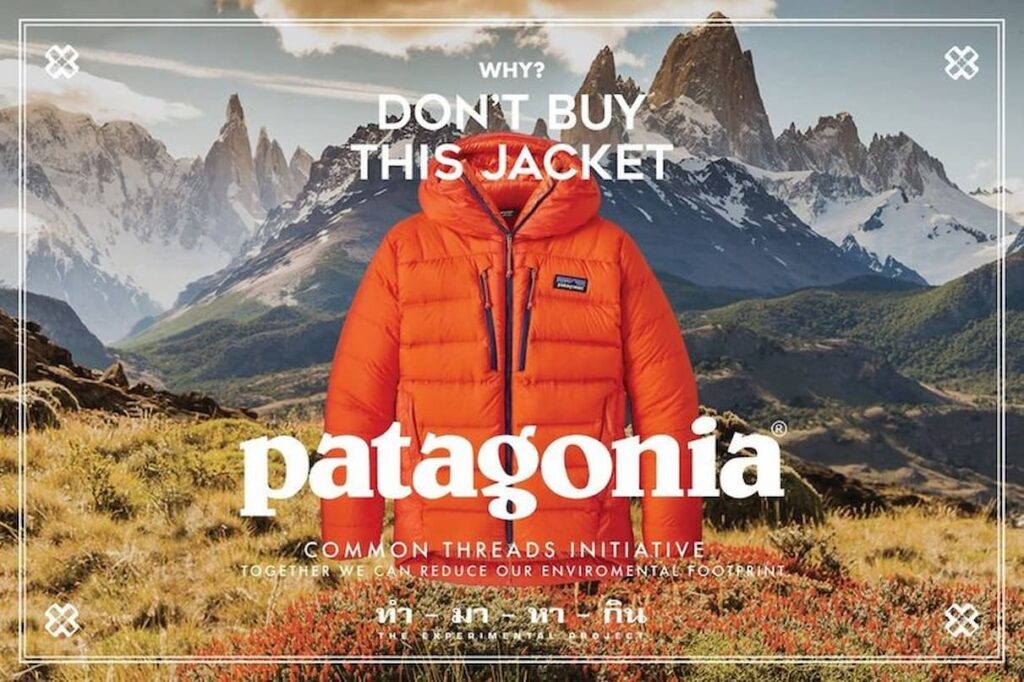Still relying on demographics to guide your marketing? You might be missing the real reason your audience buys.
Marketers today are drowning in data, from age and gender to zip codes and devices. But despite all this intel, many still struggle to understand why customers make purchasing decisions. That's where psychographic segmentation comes in. It helps uncover motivations, interests, values, and attitudes; insights that demographics alone can't provide.
In this guide, you'll discover how to uncover the real drivers behind consumer behavior, go beyond surface-level demographics, and collect psychographic data through tools like surveys and social listening. You'll see how top brands use these insights to personalize campaigns and gain a competitive edge, plus get practical tips and templates to refine your own strategy.
What Is Psychographic Segmentation?
Marketers often talk about knowing their customer, but what does that really mean? Demographics might tell you that your customer is a 34-year-old woman who lives in Austin and earns $80K. But it won't tell you that she's a minimalist who values sustainability, avoids fast fashion, and prefers spending on experiences over material goods. That's the power of psychographic segmentation.
Psychographic Segmentation Definition:
A method of market segmentation that categorizes consumers based on psychological traits, values, interests, lifestyles, and personality types to better tailor messaging and offerings.
This kind of segmentation moves beyond basic identifiers and into the realm of motivations, helping you craft messaging and products that genuinely resonate.
Where It Fits:
Psychographic market segmentation is one of the four core market segmentation types:
- Demographic (e.g., age, gender, income)
- Geographic (e.g., city, region, climate)
- Behavioral (e.g., purchase habits, usage)
- Psychographic (e.g., values, lifestyle, personality)
Think of it this way: if demographics explain who your customers are, psychographics explain why they behave the way they do.
Why Psychographic Segmentation Matters
In a world where consumer attention is scarce and personalization is everything, psychographic segmentation can be a game-changer. It helps brands cut through the noise and deliver content and experiences that actually matter to their audience.
1. Deeper Personalization
Personalization isn't just about putting someone's name in an email subject line. It's about understanding what they care about. Psychographics enable nuanced personalization by aligning messaging with people's aspirations, fears, and desires.
For example, a fitness apparel brand could tailor its emails differently to two segments: one motivated by performance and strength, and another motivated by wellness and mindfulness.
2. Informed Product Development
Psychographic insights help brands tailor products to real needs. If a segment values minimalism and speed, product design can focus on simplicity and user experience. If a segment prioritizes wellness, ingredients and packaging can align accordingly.
3. Emotional Resonance
Buying decisions are largely emotional. People buy based on feelings and justify with facts. Psychographic data helps tap into those feelings, like pride, freedom, security, or belonging, making marketing more persuasive.
4. Higher Engagement Across Channels
From email open rates to social shares and video watch time, campaigns that align with psychographic profiles tend to perform better. That's because they speak directly to people's inner beliefs and passions.
5. Better Product-Market Fit
Marketers can use psychographic data to identify not only what customers want now but also what they'll want next. This foresight can influence product development, packaging, and even customer service scripts.
6. More Efficient Ad Spend
When you understand the emotional triggers of your most valuable customers, you can refine your targeting to eliminate waste. You'll reach fewer unqualified leads and increase ROAS (Return on Ad Spend).
Businesses that implement audience segmentation strategies have seen a 760% increase in revenue from segmented campaigns compared to non-segmented ones. That's not just better targeting; that's better ROI.
How Psychographic Segmentation Compares to Other Types
Understanding how psychographic segmentation stacks up against other segmentation types is key to using it effectively. Each method has its strengths, but psychographics dig the deepest.
| Segmentation Type | Focus | Best For | Strength |
| Demographic | Age, gender, income | Broad audience profiling | Easy to collect, top-funnel targeting |
| Behavioral | Usage, purchase history | Lifecycle & loyalty marketing | Actionable, performance-based |
| Psychographic | Values, personality, lifestyle | Emotional resonance & brand alignment | Deep insight, personalization |
| Geographic | Location, region, climate | Regional campaigns & logistics | Local relevance, simplicity |
Psychographic vs Demographic Segmentation
Demographic data is easy to collect and helpful for top-of-funnel awareness. But it doesn't capture context. Two 25-year-old women might live in the same city, but one may be a thrill-seeker who spends weekends rock climbing while the other is a homebody who loves slow fashion and meditation.
Psychographics allow you to make this distinction and tailor your approach accordingly.
Psychographic vs Behavioral Segmentation
Behavioral data looks at past actions (clicks, opens, purchases). Psychographics look at why those actions happened in the first place. The two should work together.
Example: Two customers may both purchase premium skincare, but one does so for self-care and wellness, while the other does it for social image. This psychological motivation is what drives more emotionally resonant marketing.
Use behavioral cues to validate your psychographic assumptions. If a customer says they're into sustainability, they should avoid buying from fast-fashion categories.
Psychographic vs Geographic Segmentation
Location-based targeting is useful for regional offers and logistics, but it tells you little about personality or values. Psychographics can be applied universally, regardless of where the customer is.
Combine Segmentation for Deeper Insights
The most effective campaigns often blend segmentation types. For example, combine psychographic data with demographics to reach "eco-conscious Gen Z females," or with behavioral data to find "sustainability-driven repeat buyers." Hybrid segmentation sharpens your targeting while keeping messaging human.
Key Psychographic Segmentation Variables
Psychographic segmentation isn't a monolith; it consists of multiple psychological variables. When combined, they create a rich tapestry of who your audience really is. Let's explore these psychographic segmentation variables and core elements.
1. Personality Traits
These define how individuals behave and perceive the world. Common frameworks include the Big Five (openness, conscientiousness, extraversion, agreeableness, neuroticism). Brands often use personality traits to shape tone and style.
2. Values
Values are deeply held beliefs that guide decisions. Examples include:
- Sustainability
- Equality
- Freedom
- Innovation
Marketers who align their brands with customer values foster loyalty and word-of-mouth marketing.
3. Attitudes
Attitudes are opinions or feelings toward specific topics, like veganism, politics, or technology adoption. Attitudinal data helps shape brand positioning.
4. Lifestyles
This variable encompasses how people spend their time and money. Are they yoga lovers? Digital nomads? Suburban soccer parents? Lifestyles influence channels and timing.
5. Interests and Opinions
Often derived from content consumption habits, interests (e.g., crypto, gardening, gourmet cooking) can guide ad targeting, influencer partnerships, and content creation.
| Variable | Example | How It Helps |
| Personality | Adventurous, methodical, empathetic | Tailors messaging tone and brand voice |
| Values | Minimalism, eco-consciousness, status | Aligns with brand mission and messaging |
| Attitudes | Pro-technology, anti-establishment, progressive | Informs brand positioning and ad copy |
| Lifestyle | Digital nomad, working parent, foodie | Dictates channels, timing, and content type |
| Interests & Opinions | Veganism, crypto, wellness trends | Guides content topics and influencer partnerships |
How to Collect Psychographic Segmentation Data (and Build Surveys That Actually Work)
Unlike demographics, which are easy to pull from forms or databases, psychographic data requires a more nuanced approach. It involves both direct input (like surveys) and behavioral interpretation (like social media engagement).
How to Build a Psychographic Survey That Actually Works
Most marketers know they should collect psychographic data, but get stuck on how to ask the right questions. Here's a practical guide to crafting a survey that reveals what really motivates your audience.
Step-by-Step Survey Framework:
- Use Situational Questions Instead of Abstract Ones
Example:
Wrong: "Do you value adventure?"
Right: "Which weekend sounds more appealing?"
- A: A solo hike in the mountains
- B: A cozy weekend with books and tea
- Include Lifestyle and Priority Questions
Example:
"When making a major purchase, which factor matters most?"
- A: Ethical sourcing
- B: Performance or specs
- C: Brand status
- D: Price and value
- Ask About Aspirations, Not Just Current Behavior
People act on both current habits and who they want to become.
Example:
"What's your ideal self-care routine in a perfect week?"
- Daily movement
- Digital detox weekends
- Spa + indulgent skincare
- None. I don't prioritize self-care
- Use Open-Ended Questions Sparingly, but Smartly
Example:
"Describe a brand you love and why it resonates with you."
Pro Tip: Run your survey quarterly and pair the results with behavioral data (clicks, conversions, preferences) to validate and evolve your psychographic segments.
Key Sources of Psychographic Data:
This section will outline the foundational practices for setting up your psychographic data collection systems.
- Surveys & Quizzes: Tools like Typeform or Outgrow allow you to ask targeted questions about values, beliefs, motivations, and lifestyle choices. Incorporate conditional logic to personalize the user flow and improve data accuracy.
- Customer Interviews: Speaking directly with customers through structured interviews provides qualitative depth. Ask open-ended questions that dig into their values, habits, frustrations, and emotional drivers.
- CRM & Purchase Behavior: Use your CRM system to flag patterns in user activity, such as repeated purchases of eco-friendly items or luxury products, which may reflect underlying psychographics.
- Google Analytics (Affinity Categories): Analyze affinity categories and in-market segments to see what topics and industries your visitors care about.
- Social Listening Tools: Platforms like Brandwatch, Talkwalker, and Sprout Social monitor brand sentiment and conversations across platforms. This helps you extract recurring values, language, and consumer behaviors.
- Social Media Behavior: Analyze what influencers, hashtags, or communities your audience engages with to reveal shared interests and identity signals.
According to studies, companies that use psychographic segmentation are 130% more likely to understand their customers' motivations and 60% more likely to grasp their concerns and challenges. This deeper understanding lays the foundation for more effective marketing strategies.
Pro Tips:
- Combine self-reported data with behavior-based data to validate and triangulate your findings.
- Segment your surveys by audience type or buyer journey stage for more granular insights.
- Refresh your psychographic data quarterly to stay current with cultural shifts and evolving consumer sentiment.
Common Challenges in Collecting Psychographic Data
Psychographic data is inherently subjective, making it harder to quantify and verify compared to demographic or behavioral data. People may overstate their values or answer aspirationally rather than truthfully. To overcome this:
- Combine survey responses with observed behavior (e.g., purchase history, clickstream data).
- Use neutral, non-leading language in surveys.
- Re-test or validate with small control groups.
How to Use Psychographic Segmentation in Marketing
Psychographic segmentation in marketing shines when it is thoughtfully integrated into your overall product marketing strategy. It's not enough to just gather insights; you need to activate them with purpose. When applied correctly, psychographic data enhances everything from creative messaging to media planning and product recommendations. Below is a comprehensive framework to turn raw psychographic insights into targeted, emotionally intelligent marketing campaigns.
Here is a step-by-step framework:
1. Define Your Goals
Start with clear objectives that align psychographic segmentation with your business outcomes. Ask yourself:
- Are you looking to increase conversion rates on specific campaigns?
- Do you want to reduce customer churn by delivering more relevant messaging?
- Are you trying to personalize product recommendations or develop new buyer personas? Having specific goals and brand perception helps you measure effectiveness and keep your segmentation strategy focused.
2. Organize and Segment Psychographic Data
After gathering rich psychographic data through the above-mentioned methods, begin categorizing it into meaningful audience segments. Translate collected data into distinct psychographic profiles:
- Group users based on shared personality traits, lifestyles, values, and attitudes.
- Assign clear labels like "Eco-conscious Urbanites" or "Luxury Seekers."
- Build robust personas that include demographics + psychographics + behaviors.
- Use visual persona templates to share across teams. This step ensures everyone, from copywriters to designers, is aligned with audience motivations.
3. Align Messaging and Content
Once you know what your audience believes and cares about, your messaging should reflect it:
- Match tone, language, and emotional triggers with each psychographic segment.
- For value-driven users, focus on brand ethics and mission.
- For lifestyle-based segments, emphasize visual storytelling and aspirational imagery.
- Tailor CTAs to reflect goals: "Explore your freedom," "Invest in self-care," etc. Emotionally resonant messaging significantly boosts engagement and trust.
4. Choose the Right Channels
Different psychographic segments engage on different platforms. Tailor your distribution strategy accordingly:
- Email Marketing: Use personalized journeys that match psychographic interests.
- Social Media: Serve lifestyle-based creatives aligned with values and influencers.
- Paid Ads: Build custom audiences based on interests and behavioral triggers.
- Content Marketing: Publish thought leadership, how-to guides, and brand stories that align with your audience's beliefs and opinions.
- Influencer Marketing: Partner with creators who embody the traits and values of your core segments. Mapping the right messages to the right platforms increases reach and impact.
5. A/B Test and Optimize
Your first iteration won't be perfect, and that's okay. Use A/B testing to:
- Compare different emotional appeals (e.g., security vs. freedom)
- Adjust visual styles and tone of voice
- Test CTA variations for resonance
- Measure response by segment (open rates, CTR, conversions, etc.) Refine continuously to evolve with audience expectations and market changes.
How Peekage Helps: Peekage leverages psychographic segmentation to help brands go beyond basic demographics and truly understand their consumers' motivations, lifestyles, and values. By tapping into these deeper insights, brands using Peekage can craft more personalized campaigns, test concepts more effectively, and ultimately build stronger connections with their target audience.
Read more: Unveiling Consumer Insights: A Deep Dive into Understanding Your Audience
Free Psychographic Segmentation Persona Template
Creating psychographic segments is easier when you have a structured way to organize insights. Use this editable persona template to build rich profiles combining demographics, values, behaviors, and motivations.
Each persona includes:
- Name, Age, Location (Demographics)
- Lifestyle Description
- Core Values & Beliefs
- Emotional Triggers
- Preferred Content Formats (e.g., videos, podcasts)
- Key Brand Affinities
- Tone/Voice Preferences (e.g., aspirational, calm)
Example Persona Snapshot:
Name: Mindful Millennial
Age: 28 | Location: London
Lifestyle: Urban minimalist, prioritizes wellness and social impact
Values: Simplicity, Sustainability, Mental Health
Triggers: Overwhelm from excess, authenticity in brands
Prefers: Guided meditations, real stories, clean visuals
This framework helps align messaging, product design, and ad targeting with what your audience truly cares about, not just who they are.
Examples of Psychographic Segmentation in Action
Real-world brands are already using psychographic segmentation in marketing to create stronger emotional connections. Here are some psychographic segmentation examples to see how:
Patagonia
- Target Segment: Environmentally conscious, values-driven consumers
- Approach: Reinforces values like sustainability and conservation
- Messaging: "We're in business to save our home planet."

Patagonia is an American outdoor clothing company known for its high-quality gear and strong environmental values. It's renowned for its commitment to environmental sustainability and outdoor adventure. The brand's marketing strategies are designed to resonate with consumers who value environmental activism and outdoor lifestyles. For instance, their "Don't Buy This Jacket" campaign encouraged consumers to consider the environmental impact of their purchases, aligning with the values of their target audience.
BMW
- Target Segment: Affluent, status-driven lifestyle seekers
- Approach: Emphasizes innovation, luxury, and prestige
- Messaging: "The Ultimate Driving Machine"
BMW employs psychographic segmentation to attract consumers who associate vehicle ownership with status, performance, and luxury. The brand targets affluent professionals who value technological innovation and driving pleasure. BMW's marketing emphasizes these aspects, appealing to consumers' desires for prestige and performance.
DTC Skincare Brand (Instagram-first)
- Target Segment: Vegan, self-care-focused millennials
- Approach: Uses influencer partnerships and value-based storytelling
- Channel Strategy: Content highlights transparency, ingredients, and cruelty-free production
Direct-to-consumer skincare brands like Glossier and Merit Beauty leverage psychographic segmentation to connect with consumers who prioritize simplicity, authenticity, and self-care. Glossier, for example, has built a community-driven brand that emphasizes natural beauty and inclusivity, resonating with consumers seeking a more personalized and transparent skincare experience. Merit Beauty focuses on minimalist beauty routines, appealing to consumers who value efficiency and understated elegance.
| Brand | Target Psychographic | Campaign Focus |
| Patagonia | Environmentalist, minimalist | Ethical sourcing, planet-first messaging |
| BMW | Luxury, status-seeking | Innovation, prestige lifestyle ads |
| DTC Skin | Wellness, conscious shopper | Transparency, cruelty-free content |
Common Pitfalls and How to Avoid Them
Even seasoned marketers can fall into traps when using psychographic data. Avoid these mistakes to maximize your segmentation strategy.
Mistake 1: Treating Psychographics as Static
Reality: People evolve. Sentiments shift based on world events, life stages, and experiences.
Solution: Update segmentation every quarter based on fresh inputs.
Mistake 2: Using Vague or Overlapping Personas
Reality: Broad personas like "Tech Enthusiast" lack actionable depth.
Solution: Add emotional drivers, content preferences, and shopping behavior.
Mistake 3: Failing to Validate Assumptions
Reality: Just because someone says they care about health doesn't mean they act on it.
Solution: Cross-reference stated values with actual purchases and engagement.
Tools and Templates for Smarter Segmentation
There are numerous tools that help marketers gather, analyze, and act on psychographic data. Here are some of the best:
| Tool | Use Case | Strengths |
| HubSpot | CRM, automation, segmentation | All-in-one marketing hub |
| Typeform | Quizzes and psychographic surveys | Engaging and customizable |
| Sprout Social | Social listening and analytics | Tracks sentiment in real-time |
| Google Analytics | Audience interests and behaviors | Strong data from site interactions |
| Meta Audience Insights | Interests and lifestyle patterns | Great for Facebook/Instagram ads |
| Peekage | Product sampling with psychographic alignment | Matches consumers to products based on values and lifestyle |
Conclusion
Demographics tell you who your customer is. Psychographics tell you why they buy.
If you're looking to go beyond surface-level targeting and connect with your audience on a deeper, emotional level, psychographic segmentation is your secret weapon. It unlocks the motivations that drive decisions, and that's the key to building loyalty, improving ROI, and standing out in a saturated market.
Start crafting emotionally resonant campaigns by understanding your audience's true motivations. Don't just target smarter; connect deeper.
FAQs
Psychographic segmentation allows marketers to create highly relevant ad content based on a user's values, interests, and lifestyle. This increases click-through rates and conversions because the message resonates on a personal level rather than relying solely on age or location.
- Fitness-focused professionals who prioritize wellness
- Eco-conscious millennials who support ethical brands
- Entrepreneurs who value independence and risk-taking
- Travelers who seek cultural immersion and authenticity
Behavioral segmentation is based on actions like purchases or site visits. Psychographic segmentation focuses on underlying motivations such as values, personality traits, and lifestyle.
Industries that rely heavily on emotional appeal or lifestyle alignment, such as fashion, beauty, travel, wellness, automotive, and consumer electronics, benefit the most. However, even the B2B sectors can apply it for more humanized targeting.
It helps marketers create more emotionally relevant and persuasive campaigns. By understanding what truly drives a customer, brands can boost engagement, loyalty, and conversion.
Yes. Psychographic data can be used to tailor subject lines, email copy, images, and CTAs to match different segments' motivations and preferences, leading to higher open and click rates.
You can use surveys (e.g., Typeform), CRM platforms, Google Analytics affinity categories, social listening tools, and user content preferences to gather psychographic insights.
References
- Demographic segmentation: What it is and how to use it, Qualtrics,
https://www.qualtrics.com/en-gb/experience-management/brand/demographic-segmentation/ - What is market segmentation? The benefits and how to achieve success, Experian,
https://www.experian.co.uk/blogs/latest-thinking/marketing-solutions/what-is-marketing-segmentation/ - What is behavioral segmentation?, Adobe for Business,
https://business.adobe.com/blog/basics/behavioral-segmentation - What is Deep Personalization and Why You Need It, Spiceworks,
https://www.spiceworks.com/tech/artificial-intelligence/articles/what-is-deep-personalization-and-why-you-need-it/




